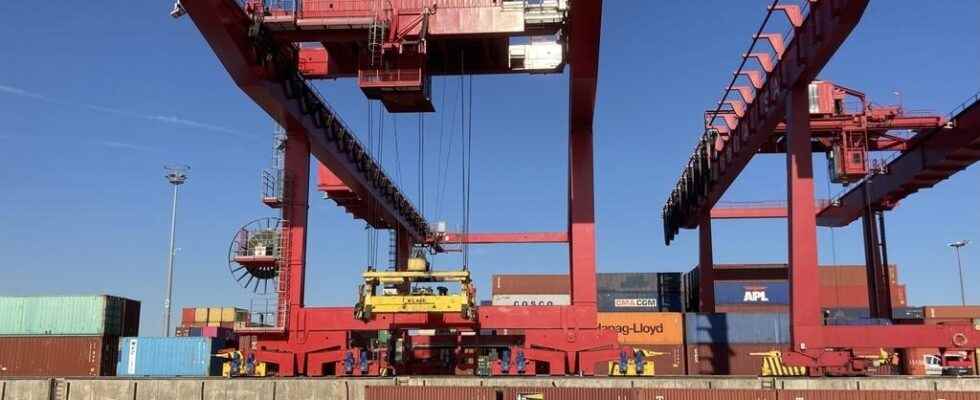Continuation of our summer series on the ports of the world. Gennevilliers is the first river port in France. Every year, millions of tons of goods and materials pass through it to serve the Paris region, in particular its major construction sites.
Two motorways, railways and the Seine all around, the port of Gennevilliers six kilometers north of Paris is a little more than a port.
” This is the region’s energy supply, all of the logistics for construction sites and public works, all of the supply of finished and semi-finished products, by containers, in particular, logistics and finally the treatment of the recovery and recovery of the waste that is produced on the scale of a metropolis. It’s a bit like the backyard of a big metropolis, like a metropolis of Greater Paris for its daily functioning. We are on multimodality, so we can bring in our goods or send them out by train or by boat. A boat consumes five times less energy than a truck per tonne transported. Having a logistics tool like that, which is not only connected by road, but also by waterway and rail is a strong asset. The fact that it is in the immediate vicinity of the consumption area also makes it possible to imagine high-performance delivery solutions with few kilometers to deliver to the end consumer. For example, by bicycle or otherwise. “, explains Jean Plateau its director.
the Zander, a boat from the fluvial transport company fueled with vegetable oils has just left the port.
” We loaded cement in Gennevilliers to deliver the Paris power stations, Issy-les-Moulineaux, Port Victor and Ivry. We loaded in four hours, and it will take us four or five days to empty. We deliver in small quantities, according to requests and needs. These are good conditions, but at the moment, we have a big lack of water, the Seine is very low. We have 1.20 meters of water below, we took a little less goods than usual, because otherwise we hit rock bottom “says Gino Peckeu the captain.
Gennevilliers, 2nd river port in Europe
scope.counterText
scope.legend
scope.counterText
scope.legend
© scope.credits
the Zander is chartered by Ciments Calcia. Its 11 silos dominate the port. In this highly polluting construction industry, society wants to increase the share of carbon-free transport. Jean-Marc Fabre manages logistics operations for Calcia cements.
” For our customers who are on the banks of the Seine, it is interesting in terms of congestion on their own sites. The concrete plants on the banks of the Seine are very constrained in terms of space. So doing five or ten truckloads of cement a day would be a lot of problems to manage. Little by little, the volumes are increasing, because we are reducing the share of trucks. We try to supply them with lorries, and we try to capture as many of these lorries as possible by transferring them to the boats. “says Jean-Marc Fabre.
The 2024 Olympic Games, whose ambition is to be the greenest in history, will be focused on the Seine. Enough to put Gennevilliers in the foreground.
“There will be a logistical issue during the period of the games. Logistics is that of the media, but also food logistics, waste, the athlete who will have forgotten his spikes at the Stade de France, which will have to be delivered to the Olympic village. All of these logistical issues are intended to go through platforms that are located in the heart of the metropolis and which benefit from logistical infrastructures, warehouses, container platforms and others to process all of these flows,” adds Jean Plateau.
To respond to this, a huge multimodal platform facing the Seine must come out of the ground between now and the Olympic Games.
